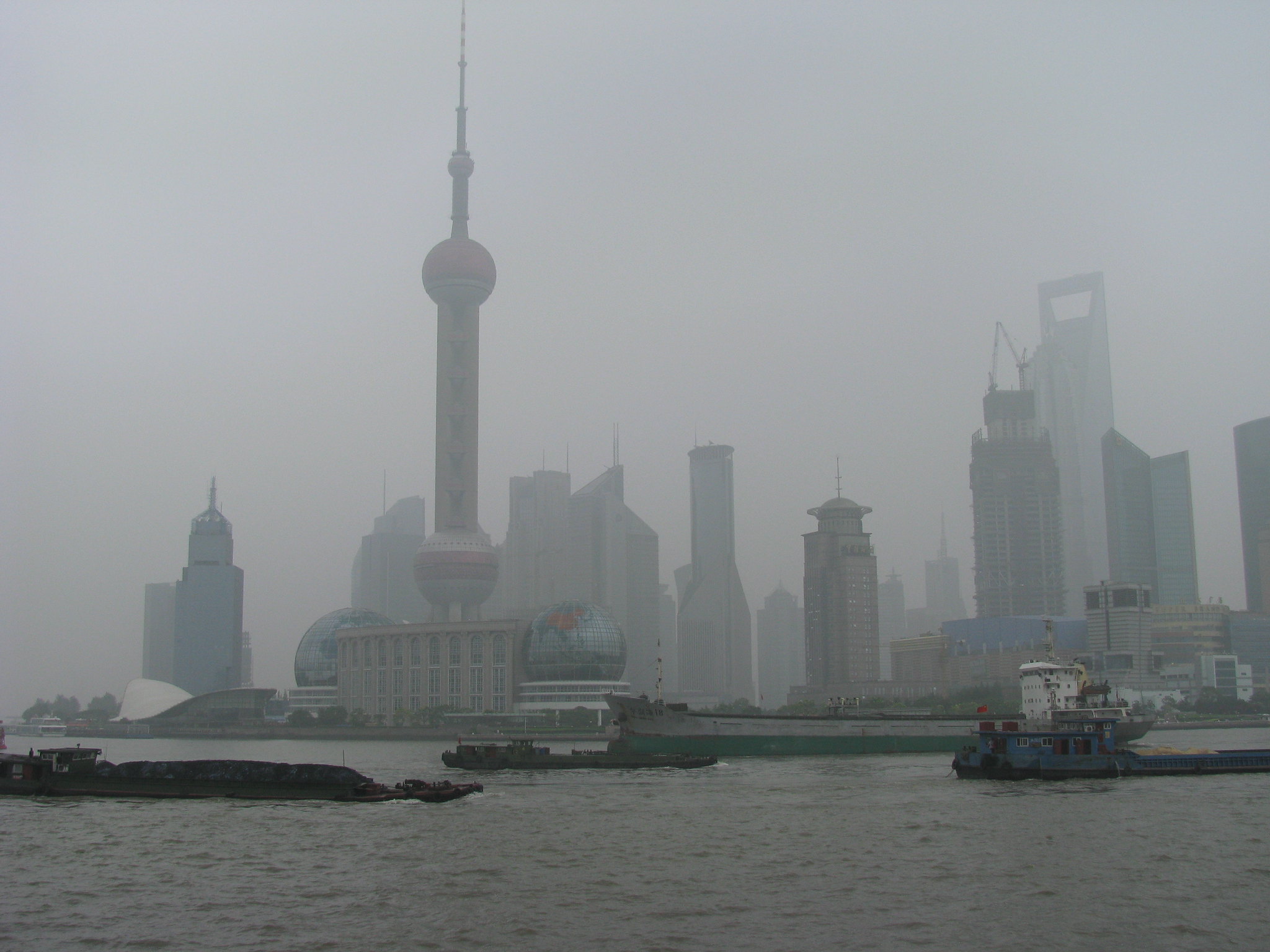Why China’s New Climate Commitments Matter for U.S. National Security
Xi Jinping made news at this year’s U.N. General Assembly by making a pledge for China to go carbon neutral by 2060. What’s the national security significance of the move?

Published by The Lawfare Institute
in Cooperation With

This year’s opening of the U.N. General Assembly was the first to be held virtually. Despite this novelty, the most notable feature of the session was not the format but, rather, a pledge from China’s top leader, President Xi Jinping, that China—the world’s largest national source of carbon dioxide—would become carbon neutral by 2060. The Sept. 22 announcement caught most observers by surprise: The 2019 General Assembly featured a summit on climate change, but the coronavirus pandemic was expected to dominate most leaders’ addresses this time around. Xi’s climate pledge unquestionably stole the show.
In the West, China’s surprise climate pledge spurred rapturous praise from some environmentalists, who portrayed it as a way to save the faltering Paris Agreement following the United States’s withdrawal. Most reactions, however, were more cautious, with energy and climate experts warning that achieving carbon neutrality for China entails daunting obstacles and should be treated with skepticism. And many China-watchers cast Xi’s announcement as more a geopolitical than an environmental gambit. By making a far-off climate pledge, several observers noted, China could boost its strained credibility with European powers and further isolate the United States without needing to take any immediate action. Both the environmental and geopolitical critiques, though, are a bit wide of the mark. China’s new climate pledge does have serious national security implications for the United States and its allies—but more for technological and economic reasons than for environmental or geopolitical ones.
To Beijing, climate change has long been an attractive issue on which to claim global leadership. After enduring much criticism for its stance at the 2009 Copenhagen climate conference, at which it was widely perceived to have blocked a global agreement to reduce emissions, China changed course. It adopted ambitious domestic clean energy policies and supported bilateral and multilateral climate diplomacy. When the U.S. government effectively withdrew from international climate initiatives after President Trump took office, Beijing seized a golden opportunity to bolster its soft power by playing up its reputation as a climate champion at little practical cost. It has since taken virtually every chance to portray itself as a responsible power in tackling global issues like climate change—and presents its efforts in sharp, if usually implicit, contrast to the United States.
However, the practical impact of this climate-driven soft-power push has been limited. It has not stopped U.S. allies such as Canada, France or Germany from taking a range of actions fundamentally averse to Beijing’s interests, from the arrest of Chinese Communist Party princeling Meng Wanzhou to the dispatch of warships into the South China Sea to pointed criticism of China’s human rights record—despite each country’s fervent desire for climate cooperation with the world’s largest emitter. Moreover, although tackling climate change is one of its highest foreign policy priorities, even the European Union responded with tempered enthusiasm to Xi’s pledge, promising to “work together” but cautioning that “a lot of work remains to be done.”
As the EU statement suggests, there are many reasons to question whether China’s pledge to become carbon neutral will save the world from catastrophic climate change. First, initial estimates suggest that if China were to achieve carbon neutrality by 2030, it would prevent 0.2-0.3 degrees Celsius of warming by midcentury. This would be an important contribution, but one that may be too little too late given that the world is already heading for many worst-case climate change outcomes, including the destabilization of the West Antarctic ice sheet, which could raise global sea levels by some 10 feet. Second, authoritative estimates suggest that fossil fuels will continue to make up a large percentage of China’s energy mix toward the middle of the century. If these predictions prove correct, achieving carbon neutrality will mean overcoming daunting political, economic and technical obstacles. Third, and perhaps most concerning, there is so far no sign that Beijing is willing to cede its dubious distinction as the biggest financier of coal-fired power plants and other high-carbon infrastructure across the developing world. In other words, even a carbon-neutral China might continue to hasten global warming through its investments abroad.
Even so, it would be a mistake to write off the potential impact of Xi’s carbon pledge on clean technology development. Both Xi and other top leaders have been clear and consistent in stating their conviction that clean energy technologies, including solar power, electric vehicles and next-generation power grid infrastructure, will be key drivers of the more innovative, higher-value-added economic model that they believe China needs in order to ensure sustainable growth. A push to cut China’s carbon emissions to or near zero would require radical enhancements to each of these technologies. Soon after Xi’s announcement, one of China’s leading universities unveiled a plan for the country to achieve carbon neutrality by eliminating coal-fired electricity generation and increasing the installed capacity of renewable wind, solar and nuclear power by more than 300 percent each. If China comes even close to meeting these expansion goals, it will likely drive major reductions in the cost of renewables and significant improvements in efficiency. Just as important, following this road map will require major investments in carbon capture, sequestration, utilization and storage (CCUS)—a means of preventing emissions from fossil fuels from entering the atmosphere that many experts believe is essential to transitioning to a carbon-neutral economy, but whose adoption across the world has been slow and halting.
All of this would be good news for the climate, even if it doesn’t prevent the planet from breaching the 2 degrees Celsius warming target set by the Paris Agreement. In theory, massive Chinese investment in clean energy should also present opportunities for mutually beneficial cooperation with countries such as the United States. The world’s largest facility for capturing carbon dioxide, a key part of CCUS, is owned by a U.S. energy firm, for example. But the facility is still far from being commercially viable. In reality, though, the economics of CCUS appear to be more favorable in China than in other countries, in part because of comparatively lax regulations in the former. This means that in principle the U.S. could get some value out of deploying and refining U.S. carbon capture technology in China through a joint venture. This type of venture should enhance the value of technology owned by firms in both countries at lower cost than if each were to attempt to develop the technology on its own. That was the logic behind the Obama administration’s U.S.-China Clean Energy Research Center, one focus of which was intended to be CCUS.
Unfortunately, the promise of such joint clean energy research efforts has increasingly collided with political reality. Rampant intellectual property theft has dampened the enthusiasm of Western firms to engage in such collaboration and makes private-sector collaboration politically suspect, especially in the United States. Moreover, the growing bipartisan political consensus that America is engaged in a long-term competition with China means that even clean technology development is apt to be viewed as a zero-sum game, even if the reality is more complicated. China’s early investments in solar energy, for example, helped boost the value of its solar exports from almost nothing to $32 billion within just a few years, lowering the price of solar energy and spurring rapid growth of America’s solar industry. But after two U.S. solar firms complained of unfair trade practices, Washington imposed tariffs on Chinese solar panel imports, which promptly fell by almost one-third and cost, by some estimates, more than 60,000 jobs in the United States. Fortunately for the planet, the price of solar panels has continued to decline, possibly offsetting the impact of the solar tariffs.
From a national security perspective, a larger concern pertains to the relative economic and technological competitiveness of Chinese and American firms, both in clean energy and in other sectors. In truth, China’s record on technological innovation and development is decidedly mixed. Despite massive state support and investment, Chinese firms remain far behind their foreign competitors in key sectors such as aviation. Meanwhile, my own research indicates that the billions Beijing is pouring into emerging technologies such as synthetic biology are often poorly allocated and directed mostly at low-hanging fruit rather than breakthrough technology. At the same time, a steady parade of reports warn that the United States in particular is at risk of losing its edge in developing future technologies because of declining investment in research and development, restrictive immigration policies, and other worrying trends. And China’s climate pledge could boost its own domestic tech sector. Initial estimates suggest that meeting China’s pledge to go carbon neutral could involve a total investment of up to $15 trillion. If even a small fraction of that amount is invested in potentially transformative clean energy technologies like fusion power, the pledge means that Chinese firms are more likely than American ones to own the intellectual property that powers the planet at the end of this century.
For the United States, the requisite policy response to China’s carbon pledge is clear: dramatically scale up investment in clean technology research and development. Despite the rapid growth of renewable energy, there is plenty of need for basic research. Continued investment in and development of existing clean technologies like solar is essential, but breakthroughs are still needed in areas like battery storage. Moreover, it’s increasingly clear that the world will need technologies that help it go not only carbon neutral but also carbon negative, removing more carbon dioxide from the atmosphere than is put into it. There are a number of candidates, including direct air capture and genetically modified plants, but these technologies are all at early stages of development. This creates both an opportunity and an imperative for the U.S., along with its partners and allies, to redouble their commitment to funding clean tech innovation. National and multilateral plans such as the U.S. Endless Frontier Act and Mission Innovation all offer numerous opportunities to scale up this commitment and ensure that China’s new climate pledge does not erode the West’s economic or technological competitiveness—all while helping to save the planet.





